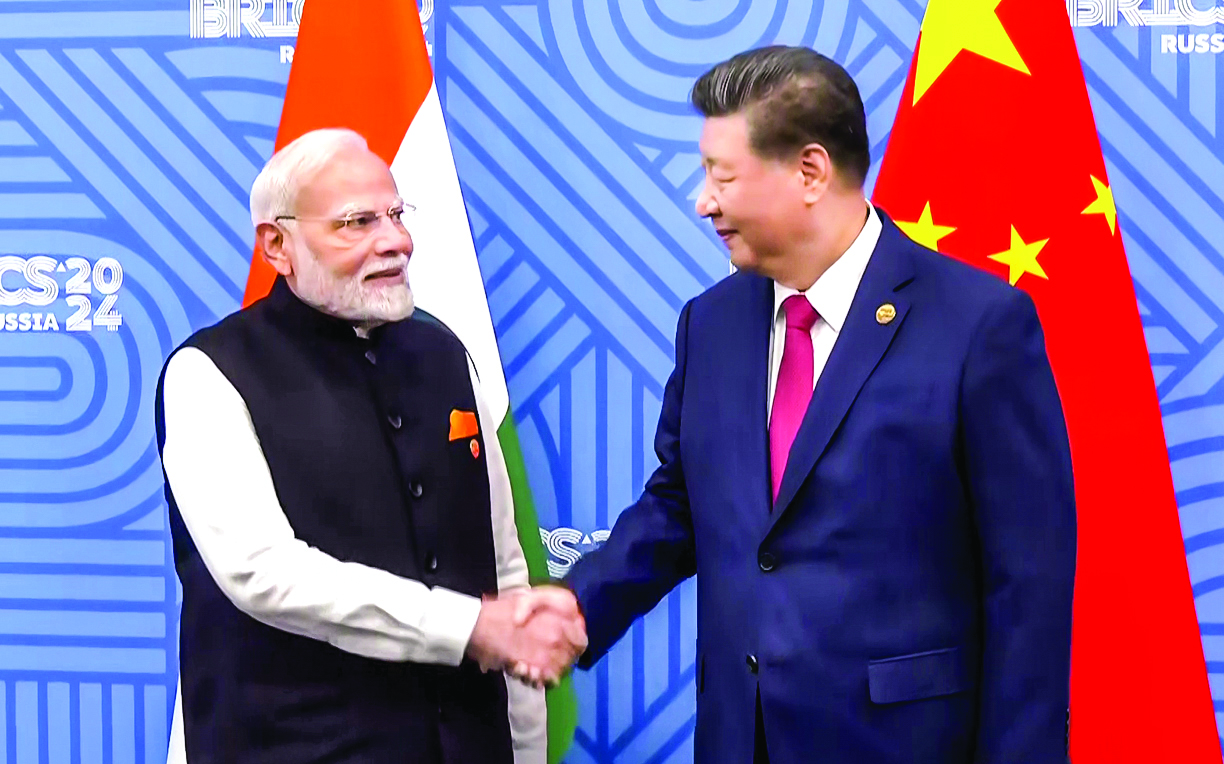The decline in India-US relations played a pivotal role in changing the dynamics of the Sino-Indian border negotiations.
Panaji, Goa: The recent agreement between India and China to restore patrolling arrangements along their disputed border to pre-June 2020 status has marked a significant step toward reducing tensions between the two countries. The deal, finalised on the sidelines of the BRICS Summit in Kazan, came after China finally complied with India’s longstanding demand
Since the June 2020 Galwan Valley clashes, which resulted in casualties on both sides, India and China have held multiple rounds of diplomatic and military talks to resolve their border dispute. However, little progress was made until the recent agreement. The breakthrough coincided with a downturn in Indo-US relations, which began to sour following a scandal in the summer of 2023 involving allegations of an Indian assassination attempt on a US citizen with ties to separatist movements.
This incident, coupled with subsequent US actions—including support for Canada in escalating a diplomatic spat with India—fuelled distrust between New Delhi and Washington. As a result, China reassessed its strategic calculus regarding its border dispute with India, no longer perceiving India as a potential partner in the US’ containment policy aimed at countering China’s influence. This shift in perception allowed China to consider a pragmatic approach to the border issue, leading to the recent agreement.
The decline in Indo-US relations played a pivotal role in changing the dynamics of the Sino-Indian border negotiations. Historically, China viewed any concession on the border issue as a sign of weakness, potentially emboldening other regional claimants, such as those involved in the South China Sea disputes. However, the realisation that Indo-US trust had been severely compromised encouraged China to see the border resolution as a strategic move to prevent India from aligning too closely with the US
The US has long pursued a divide-and-rule strategy in Asia, attempting to exploit historical tensions between India and China to maintain its influence in the region. The pressure on India to adopt Western sanctions against Russia and comply with US foreign policy objectives has only served to underscore the limits of the partnership between New Delhi and Washington. This realisation has allowed India to manoeuver diplomatically, using its rapprochement with China to signal its unwillingness to be coerced into a subordinate role.
The agreement with China signifies more than just a resolution of a longstanding border issue; it reflects a shift in India’s strategic orientation amidst growing friction with the US The 2023 scandal, US meddling in South Asian politics, and the imposition of foreign policy demands have all contributed to India’s re-evaluation of its partnership with Washington. The latest border breakthrough, therefore, can be seen as a signal to the US that India will not be compelled into playing a role in an anti-China coalition.
While military and trade relations between India and the US remain stable for now, the political rift between the two countries raises questions about the future trajectory of their ties. As India and China move toward improving bilateral relations, the US risks losing a key partner in its Indo-Pacific strategy. If India and China can continue to find common ground, it could significantly alter the power dynamics in the region and weaken the effectiveness of the US’s containment strategy.
The possibility of closer India-China ties, with the border issue no longer serving as a primary irritant, could unleash significant economic and strategic potential. The world’s two most populous nations have natural economic complementarities that could drive regional development and accelerate the transition towards a multipolar world order. This would mark a departure from the US-centric global system that has dominated since the end of the Cold War.
Should Sino-Indian relations continue to improve, it would signal a shift in global strategic dynamics, with Asia emerging as a central axis in world affairs. A partnership between India and China would not only strengthen regional stability but also challenge the current balance of power by reducing US influence in the region. This potential realignment could reshape the global order, paving the way for a new era of international relations driven by Asian powers. In retrospect, the US pressure campaign against India—spanning diplomatic, economic, and political dimensions—might inadvertently prove to be a turning point in global geopolitics. By pushing India to its limits, the US may have accelerated the very outcome it sought to prevent: a Sino-Indian rapprochement that undermines its efforts to maintain unipolar dominance. While it remains to be seen whether the current momentum in Sino-Indian relations will be sustained, the recent agreement offers a glimpse into a world where traditional rivalries are redefined in response to shifting global power structures.The restoration of pre-Galwan Valley patrolling arrangements along the India-China border marks a significant diplomatic achievement for both nations and a potential game-changer in the strategic dynamics of the region. The deal’s timing, amid growing Indo-US tensions, underscores the complex interplay between regional disputes and global power politics. As India and China navigate this new phase in their relationship, their ability to resolve longstanding issues and enhance cooperation will be pivotal in shaping the future of the international order.
Whether the US adjusts its approach in response to these developments remains uncertain, but one thing is clear: the old strategic assumptions no longer hold. The world is witnessing a recalibration of alliances, driven not by coercion or containment but by a recognition of shared interests and the desire for a more balanced global order. The implications of this evolving landscape will be felt far beyond the borders of Asia, heralding a new era of international relations where traditional rivalries give way to strategic pragmatism.
* Savio Rodrigues is the Founder and Editor-in-Chief of Goa Chronicle.

